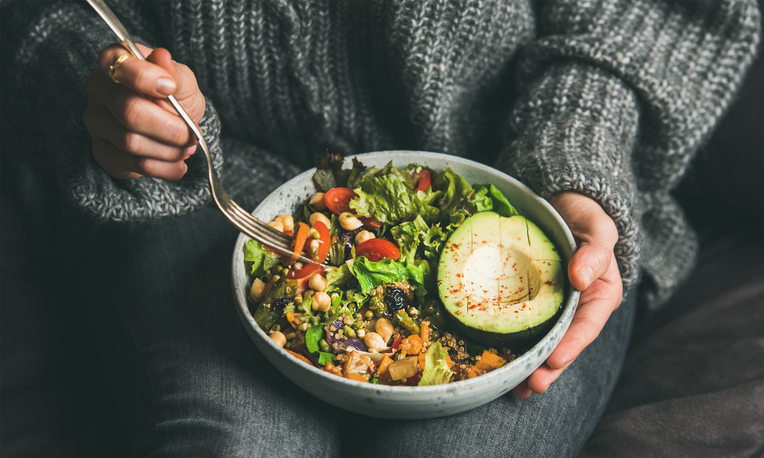We all know that we should eat healthier, but how much food is a completely different question. Those of us who have spent any time in the United States may have noticed the amount of food (portions) we are given at restaurants has gotten bigger and bigger. So have our waistlines.
It’s important not to eat too much food, but even more important to not eat too little food. The term “serving size” gets tossed around a lot but it is rarely defined. Let’s put an end to the confusion. Listed below are the suggested serving sizes from each food group on a 2,000 calorie diet.
Vegetables
- Fresh, frozen, canned, and dried
- 5 servings per day
- Examples:
- 1 cup raw leafy greens
- ½ cup cut-up vegetables
- ½ cup cooked beans or peas
- ¼ cup 100% vegetable juice
Fruits
- Fresh, frozen, canned, and dried
- 4 servings per day
- Examples:
- 1 medium whole fruit
- ½ cup cut-up fruit
- ¼ cup 100% fruit juice
- ¼ cup dried fruit
Grains
- At least half should be whole grain/high in dietary fiber
- 6 servings per day
- Examples:
- 1 slice bread
- 1 small tortilla
- 1 cup ready-to-eat cereal flakes
- 1 oz (⅛ cup) uncooked pasta or rice
- 1/2 cup cooked rice, pasta, or cereal
- 1/2 cup popped popcorn
Dairy
- Includes non-dairy nut/grain/soy-based milk and yogurts fortified with calcium and vitamin D as well as low in sugar
- Low-fat and fat-free
- 3 servings per day
- Examples:
- 1 cup soy milk
- 1 cup yogurt
- 1.5 oz cheese
Protein
- Lean and extra-lean; skin and visible fat removed
- 8-9 servings per week
- Examples:
- ¾ cup tofu
- 3 oz cooked meat or poultry
- 1 egg or 2 egg whites
- 3 oz tempeh
- 3 oz cooked fish
Nuts, seeds, beans, and legumes
- 5 servings per week
- Examples:
- 2 Tbsp peanut butter
- 2 Tbsp or 1/2 oz nuts or seeds
- ¼ cup cooked beans or peas
Fats and oils
- Preferably unsaturated
- 3 servings per day
- Omega-3 fatty acids
- Examples:
- 1 Tbsp vegetable oil (canola, corn, olive, soybean, safflower)
- 1 Tbsp soft margarine
- 1 Tbsp low-fat mayonnaise
- 1 Tbsp light salad dressing
Quick Measurement Guide
- 1 cup is about the size of a baseball or an average-sized fist
- ½ cup is about the size of a tennis ball
- 3 ounces is about the size of a deck of cards
- 1 tablespoon is about the size of the thumb
- 1 teaspoon is about the size of a postage stamp or the pointer finger at the first joint
One thing that is important to remember is that you do not need to prepare food with, or measure all food with, measuring tools. Serving sizes are suggested to give you an idea of how much of each food group you should be eating.
Remember to eat a diet that consists of fruits, vegetables, lean protein foods, nuts and grain with some milk or milk alternative products. Most of all, remember to eat the right amount of food for you and your needs.
To find out the optimal amount of food for yourself, contact your friendly Registered Dietitian. Then you can know for sure what kinds and how much food you should be eating.
Source: Heart.org, eatright.org










